Such an investigation helps you to avoid errors later, and, with an online accounting software like QuickBooks, such a comparison becomes a lot easier. Operating income includes sales revenue, income received as fees and commission, etc., and these incomes will depend on the type of business you undertake. The assets are categorized into current assets and fixed assets, and are typically reported on the left hand side of your company’s balance sheet. In this instance, a subsidiary ledger records detailed information of the related control account. Accounts receivable is most commonly used as a general Ledger control account.
Pro Tax Accountant
In double-entry accounting, every transaction affects at least two accounts, which helps maintain the balance between debits and credits. In your general ledger, all transactions are organized by the account types previously listed. Not only does this give business which is better virtual cfo or in-house cfo services owners the clearest possible picture of their financial status, but it also ensures they have everything they need for reporting and auditing. General ledger exampleFor example, if you sell $100 worth of goods, you would record it in your general ledger under revenue. If you then pay $50 in operating expenses, you would record that under expenses.
- Explore this guide to general journals versus general ledgers to better understand what they do and their main differences.
- In doing so, you’ll need to check the balance sheet accounts for details like assets, liabilities, and stockholder’s equity.
- The assets are categorized into current assets and fixed assets, and are typically reported on the left hand side of your company’s balance sheet.
- He has worked as an accountant and consultant for more than 25 years and has built financial models for all types of industries.
- QuickBooks’ intuitive accounting software helps provide a comprehensive audit trail.
- A general ledger helps to achieve this goal by compiling journal entries and allowing accounting calculations.
- For example, the asset accounts could contain cash in hand, cash in the bank, accounts receivable, prepaid expenses, real estate, machinery, and inventory.
When posting entries to the general ledger accounts, all journal entries must have equal debits and credits. In traditional accounting systems, journals are created and posted to subsidiary ledgers. GL is a set of ledger accounts where transactions recorded in journals are posted. A balance sheet is a statement that presents the company’s financial position at a point in time. This template is ideal for accounting team members who need a comprehensive record of all financial transactions.
Spotting Errors
For the most part, general ledgers included with accounting software come pre-built with the most common account types (Figure A). Depending on the software and plan, you can also add custom accounts unique to your specific business. Plus, since the general ledger is essential to double-entry bookkeeping, it helps companies ensure financial accuracy.
Assets are the resources your business owns, and these resources have the capacity to generate cash flows. Assets are items of economic value that can be converted into cash or cash equivalents. You can refer back to the details regarding the sales made and helps you to keep track of payments that have been received or yet to be received from your customers. Founded in 1993, The Motley Fool is a financial services company dedicated to making the world smarter, happier, and richer. The Motley Fool reaches millions of people every month through our premium investing solutions, free guidance and market analysis on Fool.com, top-rated podcasts, and non-profit The Motley Fool Foundation. These articles and related content is the property of The Sage Group plc or its contractors or its licensors (“Sage”).
What is the difference between general ledger and trial balance?
The next step in the general ledger and financial reporting cycle is to prepare an unadjusted trial balance. The ledger contains accounts for all items listed in the accounting equation, i.e. assets, liabilities and equity. Of course equity includes capital, revenue, expenses, gains, losses, drawings, and retained earnings, so the ledger must at least include GL account codes for each of these groups. An organization initially records every financial transaction in a general journal, where the entries are called journal entries. The next step involves classifying journal entries as separate accounts in a general ledger. The general ledger is a complete record of your business’s financial activity, sorting transactions by account, making it easy to generate reports and analyze your financial data.
The net result is that expense recognition principle both the increase and the decrease only affect one side of the accounting equation. QuickBooks’ intuitive accounting software helps provide a comprehensive audit trail. If you’re ever audited, you won’t have to dig through paper files to get organized. You can pull your general ledger report, specify an account, and review the details and supporting documentation (invoices, receipts, etc.). To get the most out of your general ledger (and all other reports), set up the company’s structure properly. Hire an accountant or bookkeeper, or learn how to set up the chart of accounts and classifications for your company’s accounting system.
Preparation of trial balance and financial statements
Say you own a publishing house, Martin & Co., and purchased 20kg of paper on cash at $20 per kg on December 1, 2020. Therefore, the following is the journal and ledger that you need to record into books for such a transaction. The general ledger is used differently depending on the account in question, but the balance sheet is the best-known use of it, so we’ll start with that as an example.
General Ledgers and Double-Entry Bookkeeping
Accounts receivable (AR) refers to money that is owed to a company by its customers. The accounts receivable process begins when a customer purchases goods or services from a company and is issued an invoice. The customer usually has a set amount of time to pay the invoice, such as 30 days. Operating expense accounts document every cost that’s needed for running your business. Things like payroll, rent, and depreciation are types of operating expense accounts.
You do this as a result of balancing the debit and the credit sides of such accounts. The general ledger is based on the double-entry cost of goods sold cogs definition accounting system, with each transaction recorded as a debit and a credit so that they balance each other. Accountants use a standardized record keeping system to monitor business transactions and financial data relevant to an organization. The general ledger can be kept in a spreadsheet, but it’s often a part of a financial accounting software package. Below are details and an example of the mechanics of a general ledger and how it fits into the accounting cycle.
- For example, activity for asset accounts such as cash, fixed assets, inventory, and accounts receivable are recorded on the ledger.
- Simply put, the whole financial statements are created from the general ledger accounts.
- You can also cut right to the chase by checking out our top accounting software recommendations below.
- In double-entry accounting, every transaction affects at least two accounts, which helps maintain the balance between debits and credits.
- Free software options like Wave Accounting make general ledger creation as easy and simple as possible.
- The transactions are then closed out or summarized in the general ledger, and the accountant generates a trial balance, which serves as a report of each ledger account’s balance.
The GL serves as the basis for a company’s income statements, balance sheets, and cash flow statements. By keeping your general ledger up-to-date, stakeholders, investors and analysts can accurately assess the company’s performance. As your company grows, you can use the GL to track where your money is going and where it is coming from, using this data to make future business decisions. A general ledger template is a record of the income and expenses that affect your company’s bottom line. A general ledger template can help you record and monitor your financial data to ensure your debits and credits reflect your budget. Use this sample general ledger template with example text and figures to track financial transactions.
Cash Flow Statement
It functions as a centralized repository that tracks all of a company’s transactions over time, organized by specific accounts. To reconcile your GL at the end of each fiscal period, you must generate a trial balance by totaling all of the debit and credit accounts and then checking to verify that the debits are equal to the credits. If these are not equal, then the accountant will check for errors in the journals and accounts. Use this small business general ledger template to oversee transactions and track your small business’s overall fiscal health. For each transaction, record the date, details, post reference, and debit and credit figures to keep an accurate record of all transactions.
Here is an example of how you can transfer the journal entries to a general ledger. The general ledger, also known as the GL, is a crucial component in today’s accounting systems. Bring all your accounting functions into a single, unified view, saving you admin time that can be spent on working towards your business goals. This makes it easy to trace specific transactions, for example, for auditing purposes or if you need to check any discrepancies in your financial information.
This statement is often used to prepare before the statement of stockholder’s equity because retained earnings is needed for the overall ending equity calculation. Fixed charges typically include lease payments, preferred dividends, and scheduled principal repayments. This provides a more pnl explained faq comprehensive view of a company’s ability to meet all fixed financial obligations.
Deduct dividends paid out
- After almost a decade of experience in public accounting, he created MyAccountingCourse.com to help people learn accounting & finance, pass the CPA exam, and start their career.
- Note that the amount of dividends reported in the statement of retained earnings doesn’t include dividends on preferred stock.
- Incorrectly recording dividend payments in the statement of retained earnings can have significant consequences for a company.
- Consider it a financial journey from beginning balance to the anticipated end-of-year reveal.
- For instance, in 2023, Apple Inc. reported a whopping $20 billion in retained earnings.
- Below is a table showing the 2019 and 2020 Equity section of the Balance sheet of Anael Inc. as at 29 February 2020.
- Let’s explain each step of the statement of retained earnings preparation process, with some examples.
Many individuals tend to focus solely on the statement of retained earnings when analyzing a company’s financial performance. However, it is crucial to understand the direct correlation between net income and retained earnings. By disregarding this link, one may overlook important insights into a company’s profitability and long-term financial health. Statement of retained earnings is a financial statement that shows exactly what retained earnings a company has at a specific point in time.
In the following examples, we would be given some information from the balance sheet that we are basic principles revisited going to use in preparing a statement of equity changes. The equity statement can be an important tool for investors when making decisions about whether or not to invest in a company. It can also be helpful for creditors when considering whether or not to extend credit to a company. The retained earnings statement is known by different other names depending on the nature of the business or entity.
The Financial Modeling Certification
Equity is a measure of your business’s worth, after adding up assets and taking away liabilities. Knowing how that value has changed helps shareholders understand the value of their investment. Calculating the ending retained earnings solidifies your company’s financial narrative, reflecting both past decisions and setting the stage for future investments or debt management. It’s a number that tells a story, so make sure it’s penned with precision and clarity. When you subtract dividends from your net income, you’re essentially closing the loop of your retained earnings calculation. It’s a subtraction that underscores a company’s generosity and investor-centric ethos or highlights a strategic choice to harness profits for growth.
If you find yourself wondering where your profits have gone off to, you need the statement of retained earnings. Between 1995 and 2012, Apple didn’t pay any dividends to its investors, and its retention ratio was 100%. But it still keeps a good portion of its earnings to reinvest back into product development. Corporations often use the Income Statement instead of a dedicated Statement of Retained Earnings.
Taxes are incredibly complex, so we may not have been able to answer your question in the article. Get $30 off a tax consultation with a licensed CPA or EA, and we’ll be sure to provide you with a robust, bespoke answer to whatever tax problems you may have. You can connect with a licensed CPA or EA who can file your business tax returns. Set your business up for success with our free small business tax calculator. Free up time in your firm all year by contracting monthly bookkeeping tasks to our platform. Nansel is a serial entrepreneur and financial expert with 7+ years as a business analyst.
Other Names for the Statement of Retained Earnings
A statement of retained earnings is an essential financial document that summarizes the changes in retained earnings for a specific period. Retained earnings represent the cumulative amount of net income that a company has reinvested in its business, rather than distributing it to shareholders as dividends. This statement provides valuable insight into a company’s financial health and its ability to reinvest profits for growth. In this tutorial, we will walk you through the process of preparing a statement what is a financial statement of retained earnings, step by step. The statement of retained earnings is crucial as it helps stakeholders learn how the company reinvests or distributes its profits.
Adding Net Income and Deducting Dividends Paid
It can also be used to help assess whether a company is using its profits wisely or if it is distributing too much money to shareholders through dividends. Like I earlier said, always take note of the dates and also take note of the type of shares that is receiving the dividends. In this example, the ordinary dividends were declared on all shares that are held at 28 February 2022 at $0.35 per share. This means we must calculate the total number of shares issued from the beginning of the accounting period and also add the additional shares issued during the accounting period.
Investors look at the current year’s and previous year’s retained earnings balance to predict future dividend payments and growth in the company’s share price. The statement typically starts with the beginning balance of retained earnings from the previous period. Then, it adjusts for net income or loss generated during the current period. Dividends paid to shareholders are deducted from the retained earnings balance. Other adjustments, such as changes in accounting policies or corrections of errors, are also accounted for. The retained earnings statement shows how much of a company’s profits are reinvested back into the business, and how much is paid out to shareholders as dividends.
Free Course: Understanding Financial Statements
The surplus can be distributed to the company’s shareholders according to the number of shares they own in the company. The company may use the retained earnings to fund an expansion of its operations. The funds may go into building a new plant, upgrading the current infrastructure, or hiring more staff to support the expansion. Let’s analyze the statement of retained earnings, as shown in the example data below, using ChartExpo. Rho is a fintech company, not a bank or an FDIC-insured depository institution. Checking account and card services provided by Webster Bank N.A., member FDIC.
- This will reduce the retained earnings and so would appear under the retained earnings column as explained in example 1 above.
- Then, it adjusts for net income or loss generated during the current period.
- But a retained earnings account is reported on the balance sheet under the shareholders’ equity, so they’re treated as equity.
- Taxes are incredibly complex, so we may not have been able to answer your question in the article.
- When properly calculated and interpreted within industry contexts and alongside trend analysis, it serves as an early warning system for potential financial distress and a valuable indicator of debt capacity.
It’s also sometimes called the statement of shareholders’ equity or the statement of owner’s equity, depending on the business structure. It’s also sometimes called the statement of shareholders’ equity or the statement of owner’s equity, depending on the business structure. Preparing a statement of retained earnings is a crucial aspect of financial reporting that provides valuable insights into a company’s profitability and financial health. By following the steps outlined in this tutorial, you can accurately calculate and report retained earnings, ensuring transparency and reliability in your financial statements. Remember to gather all necessary information, account for adjustments, and clearly document your calculations to maintain accuracy and credibility in your financial reporting. Retained earnings represent a crucial component of a company’s financial statement, reflecting the amount of net income left over after dividend payments have been made to shareholders.
Retained earnings can be used in a variety of ways, such as paying dividends to shareholders or reinvesting earnings back into the business. By looking at the example retained earnings, shareholders can get a sense of how profitable a company has been and how retained earnings can help business owners in the future. Retained earnings is also known as the ending balance of a company’s statement of retained earnings. The statement of retained earnings shows how profits have been retained or paid out to shareholders.
Bench simplifies your small business accounting by combining intuitive software that automates the busywork with real, professional human support. At Taxfyle, we connect small businesses with licensed, experienced CPAs or EAs in the US. We handle the hard part of finding the right tax professional by matching you with a Pro who has the right experience to meet your unique needs and will manage your bookkeeping and file taxes for you. Finding an accountant to manage your bookkeeping and file taxes is a big decision.
Savings account services provided by American Deposit Management Co. and its partner banks. International and foreign currency payments services are provided by Wise US Inc. FDIC deposit insurance coverage is available only to protect you against the failure of an FDIC-insured bank that holds your deposits and subject to FDIC limitations and requirements. Products and services offered through the Rho platform are subject to approval.
Modern companies use accounting software to prepare financial statements, including this one. Typically, the software automatically populates and updates the statement as part of the accounting cycle throughout the reporting period. However, you need an accountant to verify that the statement of retained earnings is ready for reporting.
Calculating the ending retained earnings isn’t just a mere formality—it’s a powerful indicator of economic endurance and fiscal foresight. It’s the residue of past gains, standing ready to fuel future expansions, innovations, or even outlast tough times. ” or not is a significant decision — one that can change the entire narrative of your business’s financial storyline. It’s a narrative you write with care, knowing each chapter influences the future of the company. Visualize this process as setting the stage before the hustle and bustle of business activities come into play, ensuring that the starting line is clearly marked. The beginning balance is your financial anchor, and from here, you’ll navigate through the fiscal ebbs and flows to chart the course of your retained earnings.
By retaining a portion of its net income, a company can reduce its reliance on external financing, such as debt or equity issuances, and maintain control over its financial destiny. Additionally, retained earnings can be used to fund research and development, improve operational efficiency, or pursue strategic acquisitions. The income statement is often used by corporations in place of a statement of retained earnings. This statement details the company’s revenue, expenses, and net income over a specific period, providing insights into its profitability. By revealing whether a company can grow using its own steam or if it might stumble into financial distress, the statement acts to build or diminish market and shareholder confidence. Within a company, these numbers illustrate management’s prowess in using profits effectively and deciding on dividend distributions.
While Book Value Per Share can be a helpful indicator of a company’s tangible net assets, it has several limitations that investors should be aware of. Conversely, if the market value per share exceeds BVPS, the stock might be perceived as overvalued. BVPS offers a baseline, especially valuable for value investors looking for opportunities in underpriced stocks.
Equity Figures
In essence, the book value per share seeks to find out how much are people with common stocks entitled to from the company’s equity based on the number of shares they own. The BVPS is often used when the total amount of preferred stock outstanding is not available. The “book value” is also known as its net asset value, which is the assets after liabilities. The book value per share (BVPS) ratio compares the equity held by common stockholders to the total number of outstanding shares. To put it simply, how to use an accounts receivable aging report this calculates a company’s per-share total assets less total liabilities.
Hence, the book value per share interpretation effectively indicates a company’s net asset value (i.e. total assets – total liabilities) on a per-share basis. The book value per share (BVPS) metric helps investors gauge whether a stock price is undervalued by comparing it to the firm’s market value per share. BVPS is what shareholders receive if the firm is liquidated, all tangible assets are sold, and all liabilities are paid. Book value per share is important because it is a fairly conservative way to measure a stock’s value. It is highly useful for investors to get an actual view of a company’s equity value. As earlier said, any equity or stock trading for less than its tangible book value is a good one for value investors.
How Does BVPS Differ From Market Value Per Share?
Therefore, when compared to the market value per share, a high book value per share means the stock is undervalued. Such an interpretation can be considered as a good book value per share for investors looking for undervalued stocks to buy. Once the current stock price of a company falls below its book value per share ratio, a corporate raider could make a risk-free profit by purchasing the company and liquidating it. However, when the liabilities of a company exceed its assets, a negative book value per share ratio emerges which is known as a balance sheet insolvency. Book value per share analysis involves taking the ratio of a company’s common equity divided by its number of outstanding shares.
If XYZ uses $300,000 of its earnings to reduce liabilities, then common equity also increases. The P/B ratio is a useful valuation tool that helps in understanding how many times a stock is trading over and above a company’s book value. That said, only looking at the P/B ratio of a stock will never give you a complete picture. BVPS is calculated by dividing the total equity by the number of outstanding shares.
Limitations of Book Value Per Share
- If the BVPS increases, the stock is perceived as more valuable, and the price should increase.
- The articles and research support materials available on this site are educational and are not intended to be investment or tax advice.
- If XYZ can generate higher profits and use those profits to buy assets or reduce liabilities, then the firm’s common equity increases.
- Outstanding shares are indicated as capital stock on the balance sheet of the company.
- Book value is less than market value because the market value includes the current stock price, which is more than the book value.
- It depends on a number of factors, such as the company’s financial statements, competitive landscape, and management team.
- This gives us a BVPS of $10 per share which can be compared to the current price of the stock to know if the stock is undervalued or overvalued.
BVPS is significant for investors because it offers a snapshot of a company’s net asset value per share. By analyzing BVPS, investors can gain insights into a company’s financial health and intrinsic value, aiding in the assessment of whether a stock is over or undervalued. Book Value Per Share (BVPS) is a crucial metric for investors to understand a company’s net value on a per-share basis. It is an important tool for evaluating the company’s market price relative to its book value, helping investors make informed decisions. Understanding what is book value per share can provide significant insights into a company’s financial health and valuation. Understanding how to calculate and interpret book value per share is essential for investors and financial analysts.
The BVPS formula involves taking the book value of equity and dividing the figure by the total number of outstanding shares. The value of preferred equity claims should also be subtracted from the total equity to give us the numerator (book value of equity) of the book value per share formula. Therefore, the current book value per share of a company is a way of gauging the value of its stocks. Hence, calculating the book value on a per-share basis can help investors decide if the market value of a stock is undervalued or overvalued. A stock is considered undervalued when the BVPS of a company is higher than its market value per share (current stock price).
How to Measure Market Efficiency
The book value of equity which is often called the shareholders’ equity is the value of a company’s assets as if all of its assets were liquidated to pay off its liabilities. This means that the amount of cash that remains when all outstanding liabilities are paid is expressed as the book value of equity. The computation of book value per share helps investors gauge whether a stock price is trading less than the company’s market value per share. Stocks with high book value per share than their market value per share which is the current stock price are considered to be undervalued. A high BVPS relative to the stock’s market price might indicate that the stock is undervalued, suggesting potential opportunities for investors. Conversely, a BVPS significantly lower than the market price could imply the stock is overvalued, but it may also reflect strong investor confidence in the company’s growth prospects.
- BVPS is what shareholders receive if the firm is liquidated, all tangible assets are sold, and all liabilities are paid.
- Yes, if a company’s liabilities exceed its assets, the BVPS can be negative, signaling potential financial distress.
- A low P/B ratio may indicate an undervalued stock, especially in asset-heavy industries like manufacturing or real estate.
- The shareholders’ equity in the book value per share of common stock formula is therefore what the shareholders get in the company after debts have been paid.
- The concept of Book Value Per Share has been a cornerstone of financial analysis and valuation for decades.
- By analyzing BVPS, investors can gain insights into a company’s financial health and intrinsic value, aiding in the assessment of whether a stock is over or undervalued.
How often is BVPS calculated?
Yes, Book Value Per Share can change based on changes in the company’s assets and liabilities. Factors such as earnings retention, share buybacks, and asset management can impact the BVPS. This means each share of the company is worth $10.00 in terms of the company’s equity. Now that we have a solid understanding of the balance sheet, let’s move on to the next section and learn how to calculate book value per share. Now that we have a clear understanding of the concept of book value per share, let’s move on to the next section and explore the different components of a balance sheet.
Why is BVPS important for value investors?
Book value per share is a financial metric that calculates the per-share value of a company based on its balance sheet. It represents the net worth of a company and provides insight into the value that each share of stock holds. The importance of book value per share formula and calculation is that it serves as an essential tool for value investors. It is a metric that is mostly used by value investors, people like Warren Buffet.
In this case, each share of stock would be worth $0.50 if the company got liquidated. The first part of our calculation would be to find out the total shareholders’ equity available to common shareholders and preferred stockholders. The first part is to find out the equity available to the common stockholders. You may ask why we deduct the preferred stock and average outstanding common stock. We deduct preferred stock from the shareholders’ equity because preferred shareholders are paid first after the debts are paid off. Preference share capital is the funds generated by a company through issuing preference shares.
Outstanding shares are indicated as capital stock on the balance sheet of the company. Hence, the BVSP measures the total assets of a company minus its total liabilities on a per-share basis. Investors often use financial ratios to analyze and compare stocks before making investment decisions. Understanding this ratio can help investors determine whether a stock is undervalued or overvalued based on the company’s book value. In this blog, we will explore the price-to-book (P/B) ratio in detail, covering its meaning, formula, and key advantages and limitations to help you better evaluate a company’s valuation.
The book value per share formula and calculation is a metric used to compare the market value of a firm per share. The Management Discussion and Analysis (MD&A) section of annual reports often expands on these figures. Here, management explains factors influencing book value per share, such as share buybacks or new equity issuances.
Now that we have analyzed the interpretation of book value per share, let’s move on to discuss the limitations of this calculation method. This means each friend’s share is worth $20, which represents their portion of the toy collection after accounting for what’s owed. The articles debit balance definition and research support materials available on this site are educational and are not intended to be investment or tax advice. All such information is provided solely for convenience purposes only and all users thereof should be guided accordingly.
The concept of Book Value Per Share has been a cornerstone of financial analysis and valuation for decades. It originated from the need to understand a company’s intrinsic value, separating the real assets and liabilities from market speculation. Over time, BVPS has become a key indicator for investors to determine a company’s financial health and to make informed decisions regarding stock purchases. However, it’s important to recognize the limitations of book value per share.
Book Value Per Share Analysis
We need to calculate how much shareholders’ equity is available to the common stockholders. However, how to do a bank reconciliation the market value per share—a forward-looking metric—accounts for a company’s future earning power. As a company’s potential profitability, or its expected growth rate, increases, the corresponding market value per share will also increase. Investors use BVPS to gauge whether a stock price is undervalued by comparing it to the firm’s market value per share. You need to look at the historic P/B ratio of a stock and also compare it with other stocks in the same sector or industry.
You can use the book value per share formula to help calculate the book value per share of the company. To calculate book value per share, simply divide a company’s total common equity by the number of shares outstanding. For example, if a company has total common equity of $1,000,000 and 1,000,000 shares outstanding, then its book value per share would be $1.
Some businesses may have seasonal fluctuations that impact their current ratio. For example, a retailer may have higher inventory levels leading up to the holiday season, which can impact its current ratio. Therefore, understanding a company’s seasonality is crucial when evaluating its current ratio. It’s essential to analyze a company’s current ratio trends over time to identify any patterns or changes in its liquidity. For example, a declining current ratio could indicate deteriorating liquidity, what is a schedule c irs form while an increasing current ratio could indicate improved liquidity.
A company with a current ratio of less than one doesn’t have enough current assets to cover its current financial obligations. XYZ Inc.’s current ratio is 0.68, which may indicate liquidity problems. In its Q fiscal results, Apple Inc. reported total current assets of $135.4 billion, slightly higher than its total current assets at the end of the 2021 fiscal year of $134.8 billion. However, the company’s liability composition significantly changed from 2021 to 2022. At the end of 2022, the company reported $154.0 billion of current liabilities, almost $29 billion greater than current liabilities from 2021.
How to calculate the cash ratio
- A criticism of the cash ratio is that it may be too conservative and underestimate a company’s ability to sell through inventory and to collect on its A/R.
- Some industries are seasonal, and the demand for their products or services may vary throughout the year.
- The growth potential of the industry can affect a company’s current ratio.
- The retail industry typically has high inventory levels, which can increase a company’s current assets and current ratio.
- This can result in an incomplete picture of a company’s financial health.
The current ratio can also analyze a company’s financial health over time. Let’s say that Company E had a current ratio of 1.5 last year and a current ratio of 2.0 this year. This suggests that Company E has improved its ability to pay its short-term debts and obligations over the past year.
- More investigation may be needed because there is a probability that the accounts payable will have to be paid before the entire balance of the notes-payable account.
- Even a strong cash coverage ratio means nothing if margins are evaporating.
- The Current Ratio is a measure of a company’s near-term liquidity position, or more specifically, the short-term obligations coming due within one year.
- On December 31, 2016, the balance sheet of Marshal company shows the total current assets of $1,100,000 and the total current liabilities of $400,000.
- For example, a company may have a very high current ratio, but its accounts receivable may be very aged, perhaps because its customers pay slowly, which may be hidden in the current ratio.
Difference Between Quick Ratio and Current Ratio
The quick ratio is equal to liquid assets of a company minus inventory divided by current liabilities. Because if the company has to sell the inventory quickly it may have to offer a discount. For your convenience, here is a free template for you to calculate current ratio where you have to only put values of current assets and current liabilities. From this example we can clearly see that the current assets of company A exceeds the current liabilities.
Cash Flow to Debt Ratio
The Federal Reserve eliminated reserve requirements entirely in 2020, and the Bank of Canada doesn’t use a formal CRR at all. Instead, it manages liquidity through interest rates and open market operations. Because that’s what keeps your team paid, your bills covered, and your company alive when the wind shifts. In case where bank overdraft is permanent feature and minimum investment in stock cannot be en-cashed the same should not be treated as current items. If you are looking to take out a loan to improve your short-term cash flow, Lendio can help.
How Does the Industry in Which a Company Operates Affect Its Current Ratio?
In this example, although both companies seem similar, Company B is likely in a more liquid and solvent position. An investor can dig deeper into the details of a current ratio comparison by evaluating other liquidity ratios that are more narrowly focused than the current ratio. Finally, the operating cash flow ratio compares a company’s active cash flow from operating activities (CFO) to its current liabilities.
Formula of Current Ratio:
Each looks at different aspects of your business’s performance to help you look at your business’s financial stability and risk exposure from different perspectives. A local cafe is interested in using cash to purchase a new espresso machine. However, the owner first wants to get a better understanding of its liquidity, ensuring they have enough cash on hand to meet short-term obligations in the first place. In this guide, we’ll provide an overview of the cash ratio definition and formula, and the important insights that this metric provides to business leaders. It doesn’t mean it’s undervalued – just that you’re paying slightly less per dollar of cash flow compared to Walmart.
This allows a company to better gauge funding capabilities by omitting implications created by accounting entries. A current ratio that is in line with the industry average or slightly higher is generally considered acceptable. A current ratio that is lower than the industry average may indicate a higher risk of distress or default by the company. If a company has profit center: characteristics vs a cost center with examples a very high current ratio compared with its peer group, it indicates that management may not be using its assets efficiently. It shows how reliant a company is on borrowed funds relative to its intrinsic worth, providing insight into financial health. The cash ratio can also help internal decision makers drive business strategy.
Inventory consideration:
A low cash ratio doesn’t scream “danger” unless they’re running out of time to raise or generate revenue. It all depends on the industry, the company’s age, its risk tolerance, and how fast it burns through cash. It tells you whether a company can actually cover its interest payments without relying on future revenue or asset sales.
A business dealing in consumer goods will require better current ratio as compared to a business which is dealing in durable or capital goods. Let’s have a look at the difference between quick ratio vs current ratio. Before rushing towards the difference between both here you are given a short explanation of what is quick ratio. Quick ratio also help us in measuring the accounts receivable and bad debts expense financial ability of a company to pay its financial obligation.
Current ratio formula
Ironically, the industry that extends more credit actually may have a superficially stronger current ratio because its current assets would be higher. In this example, the trend for Company B is negative, meaning the current ratio is decreasing over time. An analyst or investor seeing these numbers would need to investigate further to see what is causing the negative trend. It could be a sign that the company is taking on too much debt or that its cash balance is being depleted, either of which could be a solvency issue if the trend worsens. For example, a normal cycle for the company’s collections and payment processes may lead to a high current ratio as payments are received, but a low current ratio as those collections ebb. The cash ratio is just one metric businesses can use to evaluate their financial health and drive strategic decisions.
In this scenario, the company would have a current ratio of 1.5, calculated by dividing its current assets ($150,000) by its current liabilities ($100,000). The current ratio, also commonly referred to as the working capital ratio, evaluates whether a company can cover its current liabilities with its current assets. The current ratio formula divides a company’s current assets by its current liabilities. It’s a useful calculation that can be used to determine if a company can pay its short-term obligations based on the value of its current assets within a year. The importance of the current ratio is its ability to measure short-term financial health.
By determining the value of both a company’s current assets and liabilities, stakeholders, creditors, and other investors can make calculations and gain insights as to how a company is managing its finances. Current ratio of a company compares the current asset of a company to current liabilities. Similarly, to measure a company’s ability to pay its expenses or financial obligation we need to figure out company’s current ratio which in turn help us in figuring out the company’s financial condition. The current ratio is a financial ratio that shows the proportion of a company’s current assets to its current liabilities.
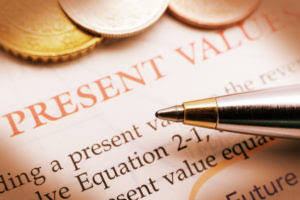
Finally, it’s also possible that they’re deliberately trying to discourage specific customers from doing business with them. Whatever the reason, overpricing can ultimately hurt a business by driving away potential customers. When a company under costs net sales its products, it may find itself in a situation where it cannot cover its costs and make a profit. If a company consistently under costs its products, it may eventually go out of business. Understanding product cost is critical for making informed business decisions, such as discontinuing a product line or expanding into new markets.
What is the main difference between product costs and period costs?
If production costs increase due to increased raw material prices or wages, this will also directly affect the overall product cost. This is the cost of indirect materials and indirect labor required to produce the product. Indirect labor might consist of supervisors, maintenance personnel, and office staff. Several businesses have successfully implemented cost savings strategies to improve their bottom line. For example, Toyota has implemented lean manufacturing techniques to reduce waste and optimize production processes, resulting in significant cost savings. Similarly, Walmart has renegotiated contracts with suppliers to secure better prices and terms, allowing the company to pass the savings on to customers.

Price your products in line with the market:
Understanding product cost is essential for determining the profit margin of a product. product costs consist of The profit margin is the amount of money a company earns after it covers its costs. Finally, assessing business processes regularly and improving efficiency is essential for controlling costs while ensuring proper functionality. Regularly evaluating vendors and comparing prices for different materials can also help companies save money.

Product Costing: What it is and why it matters
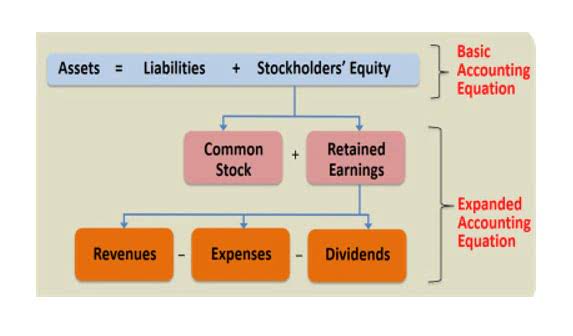
However, other indirect costs are more closely related to specific products or services. For example, the cost of setting up a production run for Bookkeeping for Painters a particular product will likely be directly related to that product. Product cost is an essential factor in determining a company’s profitability. To maximize profitability, companies must carefully control their production costs while also striving to produce high-quality products that customers are willing to pay for.

Companies using activity-based costing gain a clearer picture of their cost structure, enabling them to set prices aligned with customer value. When the product is sold, these costs are transferred from inventory account to cost of goods sold account and appear as such on the income statement of the relevant period. For example, John & Muller company manufactures 500 units of product X in year 2022. Out of these 500 units manufactured, the company sells only 300 units during the year 2022 and 200 unsold units remain in ending inventory.
- This ensures labor costs are recognized in the same period as the revenues they generate.
- Without QA, your development costs could increase and your timeline can extend further than originally anticipated.
- This will give you an accurate view of your cost structure, and it’s also essential information when calculating taxes owed or other financial statements.
- Properly capitalized costs contribute to inventory valuation, affecting cost of goods sold and net income.
- Transferred to income statement as Cost of Goods Sold (COGS) when products are sold.
Reduce your material expenditures:
- Overcosting and undercosting are two types of cost-accounting mistakes that can be made during the production of a product.
- Also, if your prices aren’t aligned with your business goals, it might be hard to get the desired results.
- If the sale price is equal, it is a break-even situation, i.e., no profit or loss, and the sales price covers the cost per unit.
- For example, if you were making a shirt, the direct materials would be fabric, thread, and buttons.
- Distinguishing itself from period costs—incurred for activities not directly tied to production—product costs play a pivotal role in determining product pricing.
This article delves into the intricacies of product costing to help you gain a deeper understanding of its importance. You may need to buy state-of-the-art equipment for your developers and other team members. To avoid losses, the sales price must be equal to or greater than the product cost per unit. If the sale price is equal, it is a break-even situation, i.e., no profit or loss, and the sales price covers the cost per unit. On the other hand, a sales price higher than the cost per unit results in gains.
Shareholder Equity is equal to a business’s total assets minus its total liabilities. It can be found on a balance sheet and is one of the most important metrics for analysts to assess the financial health of a company. Equity on the other hand is the shareholders’ claims on the company assets. This is the amount of money shareholders have contributed to the company for an ownership stake. Equity is usually shown after liabilities in the accounting equation because liabilities must have to be repaid before owners’ claims.
The accounting equation also indicates that the company’s creditors had a claim of $7,120 and the owner had a residual claim of $10,080. The totals indicate that the transactions through what is the formula for calculating earnings per share eps December 4 result in assets of $16,900. There are two sources for those assets—the creditors provided $7,000 of assets, and the owner of the company provided $9,900. You can also interpret the accounting equation to say that the company has assets of $16,900 and the lenders have a claim of $7,000 and the owner has a residual claim for the remainder.
Purchasing a Machine with Cash and Credit
The amounts in the general ledger accounts will be used to prepare the balance sheets and income statements. The double-entry system requires a company’s transactions to be entered/recorded in two (or more) general ledger accounts. One account will have the amount entered on the left-side (a debit entry), while another account will have the amount entered on the right-side (a credit entry). As a result, the total amount of debits in the accounts will be equal to the total amount of credits in the accounts. This will be evidenced by the accounting equation and the company’s balance sheet. Accounting equation describes that the total value of assets of a business entity is always equal to its liabilities plus owner’s equity.
- As a result these items are not reported among the assets appearing on the balance sheet.
- It is easy to see that an additional investment by the owner will directly increase the owner’s equity.
- In our examples below, we show how a given transaction affects the accounting equation for a corporation.
- Some assets are tangible like cash while others are theoretical or intangible like goodwill or copyrights.
- The totals after the first eight transactions indicate that the corporation had assets of $17,200.
- As a result we have $70,000 before considering the amount of Net Income.
Income Statement
This change must be offset by a $500 increase in Total Liabilities or Total 10 business development tips for attorneys Equity. Liabilities are owed to third parties, whereas Equity is owed to the owners of the business. Shaun Conrad is a Certified Public Accountant and CPA exam expert with a passion for teaching. After almost a decade of experience in public accounting, he created MyAccountingCourse.com to help people learn accounting & finance, pass the CPA exam, and start their career. CFI is the global institution behind the financial modeling and valuation analyst FMVA® Designation.
Basic Accounting Equation Mini Quiz:
It provides a clear snapshot of what a business owns, owes, and the residual interest held by its owners. In other words the expanded accounting formula shows retained earnings is the link between the balance sheet and income statement. Moreover the income statement is in fact a further analysis of the equity of the business. It’s a tool used by company leaders, investors, and analysts that better helps them understand the business’s financial health in terms of its assets versus liabilities and equity. Although revenues cause stockholders’ equity to increase, the revenue transaction is not recorded directly into a stockholders’ equity account.
The purpose is to allocate the cost to expense in order to comply with the matching principle. In other words, the amount allocated to expense is not indicative of the economic value being consumed. Similarly, the amount not yet allocated is not an indication of its current market value.
Arrangement #3: Assets = Liabilities + Owner’s Capital – Owner’s Drawings + Revenues – Expenses
- Get instant access to video lessons taught by experienced investment bankers.
- When the allowance account is used, the company is anticipating that some accounts will be uncollectible in advance of knowing the specific account.
- The creditors provided $7,000 and the owner of the company provided $9,300.
- Shareholder Equity is equal to a business’s total assets minus its total liabilities.
- Rather, the amount earned is recorded in the revenue account Service Revenues.
- The total dollar amounts of two sides of accounting equation are always equal because they represent two different views of the same thing.
The creditors provided $7,120 and the company’s stockholders provided $10,080. The accounting equation also indicates that the company’s creditors had a claim of $7,120 and the stockholders had a residual claim of $10,080. Because it considers assets, liabilities, and equity (also known as shareholders’ equity or owner’s equity), this basic accounting equation is the basis of a business’s balance sheet. Thus, all of the company’s assets stem from either creditors or investors i.e. liabilities and equity.
As you can see, shareholder’s equity is the remainder after liabilities have been subtracted from assets. This is because creditors – parties that lend money such as banks – have the first claim to a company’s assets. The accounting equation ensures that a company’s financial records remain balanced and accurate, forming the foundation of double-entry accounting.
The Basic Accounting Equationor Formula
The totals tell us that the company has assets of $9,900 and that the only claim against those assets is the stockholders’ claim. The remaining parts of this Explanation will illustrate similar transactions and their effect on the accounting equation when the company is a corporation instead of a sole proprietorship. An error in transaction analysis could result in incorrect financial statements.
Accounting Equation for a Corporation: Transactions C3–C4
The totals indicate that ASC has assets of $9,900 and the source of those assets is the owner of the company. You can also conclude that the company has assets or resources of $9,900 and the only claim against those resources is the owner’s claim. To see this report showing the accounting equation, check out the lesson on the balance sheet. After six months, Speakers, Inc. is growing rapidly and needs to find a new place of business.
The Basic Accounting Equation Formula & Explanation
Consequently it is possible to restate the fully expanded accounting equation as follows. Under the accrual basis of accounting, the Service Revenues account reports the fees earned by a company during the time period indicated in the heading of the income statement. Service Revenues include work completed whether or not it was billed. Service Revenues is an operating revenue account and will appear at the beginning of the company’s income statement. If the net amount is a negative amount, it is referred to as a net loss. A gain is measured by the proceeds from the sale minus the amount shown on the company’s books.
The proceeds of the bank loan are not considered to be revenue since ASC did not earn the money by providing services, investing, etc. As a result, there is no income statement effect from this transaction. For the accounting period of the four days ended December 4, there is no revenue or expense to be reported on the income statement. As you can see, ASC’s assets increase by $10,000 and so does ASC’s owner’s equity. The claims to the assets owned by a business entity are primarily divided into two types – the claims of creditors and the claims of owner of the business. In accounting, the claims of creditors are referred to as liabilities and the claims of owner are referred to as owner’s equity.
This transaction affects both sides of the accounting equation; both the left and right sides of the equation increase by +$250. The what is an accounting information system your guide to ais double-entry practice ensures that the accounting equation always remains balanced, meaning that the left-side value of the equation will always match the right-side value. It should be noted that the term net worth is sometimes used in relation to an individual. In general the calculation for an individual refers to the market value of their assets and liabilities and as such represents the net wealth of the individual. It is also possible to write the expanded accounted equation in terms of the current period net income.
Additionally on the other side is the funding for the asset in this case credit from a supplier (what the business owes). To further illustrate the analysis of transactions and their effects on the basic accounting equation, we will analyze the activities of Metro Courier, Inc., a fictitious corporation. Since ASI has not yet earned any revenues nor incurred any expenses, there are no amounts to be reported on an income statement. In our examples below, we show how a given transaction affects the accounting equation for a corporation.
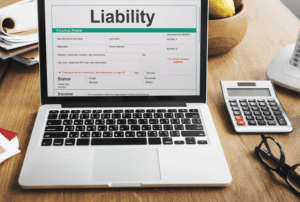
Cash donations are income summary the most common type of donation received by nonprofit organizations. They can come in various forms such as cash, checks, credit card payments, or even digital transactions. The process of accounting for cash donations is relatively straightforward. It involves recording the donation as revenue and acknowledging the donor with a receipt. However, it’s important to keep track of each cash donation meticulously, including the donor’s details and donation date, to ensure transparency and accountability. In-kind contributors are typically accountants, architects, carpenters, doctors, electricians, awyers, nurses, plumbers, teachers, and other professionals and tradesmen.
What types of stocks can be donated to nonprofits?
- Some brokers will give special deals, meaning low fees, to nonprofit organizations.
- First, decide whether or not you will immediately sell the stock or hold onto it (more on that in a moment), and how you will communicate your policy so that there are no surprises with the donor.
- If they were to sell the stock first and then donate the proceeds, they would be liable for capital gains tax on the $4,000 profit, reducing the net benefit of their donation.
- Last week I shared an overview about recording non-cash gifts and the opportunity for a nonprofit organization to accurately present the types and value of contributions it receives to support its mission.
- Thus, any allocation between exchange and contribution revenue would provide little benefit.
- As a nonprofit bookkeeper or accountant for a nonprofit organization, you understand the importance of donations in keeping your organization functioning.
Like an individual who receives a gift, the private foundation must measure its gain or loss when it sells on the carry-over basis it received from the donor. Therefore, in order to pay the proper tax, a private foundation needs to keep a record of the original cost basis of the donor somewhere in order to determine its gain or loss correctly. Nonprofits that receive significant GIKs should begin the process of complying with the new reporting requirements. New and/or additional reporting systems and processes may need to be put in place and new/revised policies regarding sale or use of GIKs may be required. Additional information and interdepartmental coordination (accounting, fundraising, major gifts etc.) may be needed. And as always, consultation with professional advisors should be part of the process.
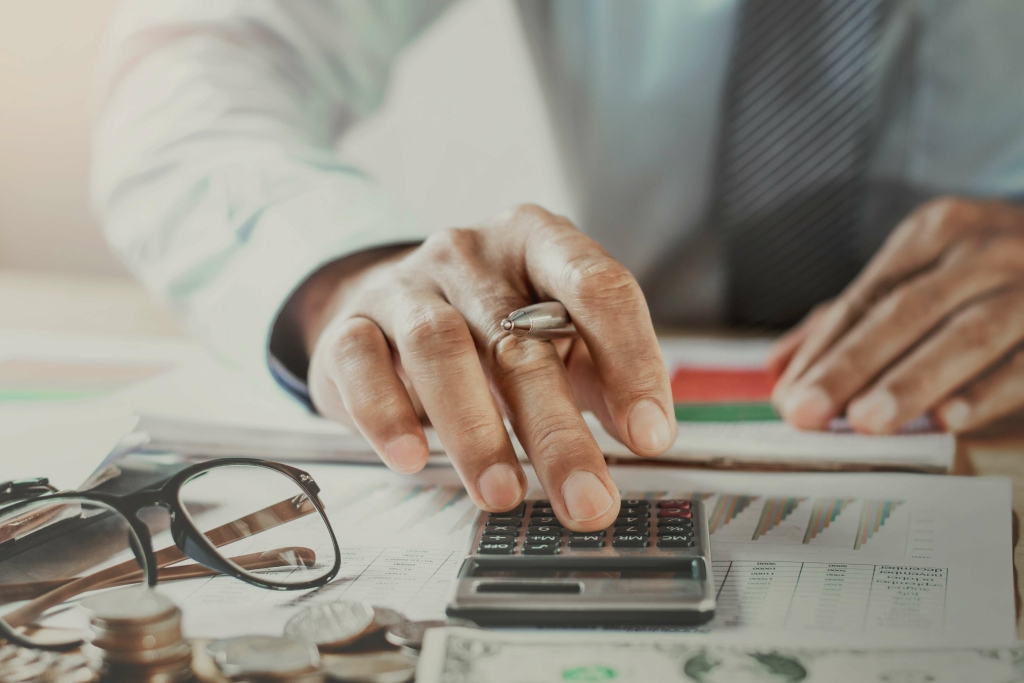
Cash Management for Nonprofit Organizations: Basics + 8 Tips

For example, an electrician donating his services during a construction project Interior Design Bookkeeping at a cost below market or for no cost. Under GAAP, the service would qualify as an in-kindcontribution as the electrician has a specialized skill that the nonprofit would otherwise have to purchase. The organization would record the receipt of these services in the “statement of activities” with an offsetting expense or capital assets addition, as explained below. It’s important to implement an internal policy for donated items as well as create a donor receipt method for noncash contributions. When accounting for donations to nonprofit organizations, the value of the donation can be determined several different ways. It is normally up to the donor to determine the value of their gift and the benefactor to determine the value received.
- As discussed below, this circumstance would result in bifurcating the grant into an exchange (publicity) and contribution (the difference between the fair value of the publicity and total amount provided).
- The first step in this process involves recognizing the fair market value of the donated stock on the date of the donation.
- If the stock is traded on multiple exchanges, the donor should use the prices from the primary exchange where the stock is most actively traded.
- We can even immediately liquidate received stock gifts for you, ensuring your nonprofit can put them to work for your mission as quickly as possible without waiting on a middleman brokerage.
Reasons Why Nonprofits Should Accept Stock Donations
Historically, giving and accepting stocks has been messy and overly complicated for both donors and nonprofits. Its benefits have been hard to understand, and nonprofits often don’t know how to help donors through the process. Generally, donors aren’t making stock donations simply because they don’t understand the benefits nonprofit accounting for stock donations and nonprofits aren’t asking for them. Now that we’ve covered how to accept stock donations for your nonprofit, let’s take a look at three reasons why your organization should be asking donors for their stocks. Managing donations is a complex task, but with the right tools and knowledge, it can be a breeze.

Events Calendar
- The stock becomes the asset of the organization once it is transferred to the organization, rather than when it is sold.
- For donations of stock valued at more than $500, the IRS requires the donor to complete Form 8283 and attach it to their tax return.
- Ensure your nonprofit follows necessary requirements on its end, such as filing Form 990 and distributing accurate donation receipts.
- First and foremost, the benefits and tax savings of donating stock frequently encourage donors to give what would be considered major gifts, perhaps for the first time.
- Once the value is determined, it needs to be recorded as a donation and the donor should receive a receipt describing the gift and its estimated value.
Using the right tools and taking the right approach makes all the difference when expanding into a new form of giving. Stock giving was previously treated as a kind of black box that spat out gifts but offered little visibility. But remember that a modern, active approach generates more value—not just in terms of the gifts themselves but also increased control over the process and the ability to directly connect with and steward your non-cash donors.
4.1 Recognizing donated noncash assets
Contact us today to learn more about how we can help your nonprofit and get started. We’ll modernize and manage your accounting systems to save you time, money, and stress. It’s recommended that you lump materials and goods together as much as possible, so you’re not burdened with this task. Sign up below for the free eBook, which will guide you through what a fixed asset is, and how you and your organization can track, manage, and depreciate it throughout the course of its useful life. When it comes to managing, tracking, and depreciating fixed assets, it is extremely important to make sure you are doing it correctly. AVAILABLE NOW – Great Beginnings for New Nonprofits, a free 8-part email course on fundraising, financial management and other „must know” topics.
In contrast, intangible assets lack physical substance but are nonetheless crucial to a business’s operations. Unlike intangible assets, which lack physical form, tangible assets offer a tangible and quantifiable representation of a company’s value. Their inclusion in a company’s balance sheet provides transparency and insight into the company’s operational capabilities.
These assets are instrumental in supporting day-to-day activities and form a critical component of a company’s asset portfolio. Subtracting the value of intangible assets from the total assets yields the tangible assets value, reflecting the tangible worth of your business. Long-term assets that are not used in daily operations are typically classified as an investment. For example, if a business owns land on which it operates a store, warehouse, factory, or offices, the cost of that land would be included in property, plant, and equipment. Including depreciation on a company’s financial statement helps to more accurately represent the current cost of tangible assets.
- Understanding these classifications is essential for making informed decisions and sustaining long-term growth.
- If you’re new to the balance sheet, understanding each of its components can seem like an overwhelming and complicated ordeal.
- This is because tangible assets have a real-world value that can be sold if needed to repay the loan.
- Assets that provide value to a business but do not have a physical form are referred to as intangible.
- Their physical nature ensures they can be bought, sold, or used to secure loans, adding to their versatility.
In the fast-paced financial world, reliable skip tracing and credit report data are essential for success. The following distinctions highlight key ways to group assets and their unique roles in an organization’s operations. By maintaining a clear picture of what assets are and how they operate within a business, organizations can better plan their strategies, manage risks, and achieve their goals. In the world of business, there’s a critical distinction between different types of profit that can impact decisions at every level. Refers to the value of certain favorable factors that a business possesses that allows it to generate a greater rate of return or profit. Inventory is a current asset and was discussed in 3.1 Inventory and Cost of Goods Sold.
These assets are not only the foundation of financial stability but also offer valuable insights into growth potential and operational efficiency. Business assets include both tangible and intangible resources that contribute to the success of an organization. Whether your company is holding land to redevelop, to resell later for a profit, or for any other purpose, the piece of land can be listed under long-term assets on the balance sheet. This also applies to all types of land, regardless of whether it is located in a rural or urban area. A further example to illustrate the value of an intangible asset on a business is the brand’s logo.
Capitalization is the process by which a long-term asset is recorded on the balance sheet and its allocated costs are expensed on the income statement over the asset’s economic life. Tangible assets are the physical properties and resources that bolster a business’s operations and financial position. Unlike intangible assets, which lack a physical form, tangible assets have a tangible presence and include items such as real estate, equipment, vehicles, and inventory. When you’re starting to ascertain the difference between tangible and intangible business assets, the easiest place to start is with tangible assets. Tangible assets are items that a business owns that have a physical form. Tangible assets usually have a market and ease of transferability which make them easier to value than intangible assets.
Cons of Tangible Assets
Nike originally paid $35 for a designer to create the Nike logo, but the brand is now worth an estimated $29.6 billion. Sometimes incorrectly referred to as return on tangible assets, return on net assets (RONA) measures how well your business is using its assets. The higher your return on net assets, the better your business is performing. When you depreciate assets, entries in your accounting books are different than recording current assets. You must debit your expense account and credit your accumulated depreciation account. Explore strategies for effective asset management, including tracking, valuation & depreciation.
The Difference Between Fixed Assets and Current Assets
Liquid, or current, assets, are tangible assets that can be quickly converted into cash or remain in the business for a short period of time, typically for up to one year. Intellectual property (IP) is an intangible asset that plays a large part in determining the value of a business. In an increasingly technology-driven economy, many businesses are being acquired for their technology patents, software, user contracts, and other proprietary information or trade secrets. To find RONA, divide net income (revenue – expenses) by your fixed assets and net working capital.
How to manage tangible assets effectively
You need to debit your inventory account because you are increasing the amount of inventory you have. And, you need to credit your cash account because you are spending money. a tangible item a business owns. By effectively managing and leveraging these resources, businesses can significantly increase their overall value and strengthen their competitive position in the marketplace. If you’re new to the balance sheet, understanding each of its components can seem like an overwhelming and complicated ordeal.
A copyright provides the exclusive right to reproduce and sell artistic, literary, or musical compositions. Anyone who owns the copyright to a specific piece of work has exclusive rights to that work. Copyrights in the United States last seventy years beyond the death of the original author. While you might not be overly interested in what seems to be an obscure law, it actually directly affects you and your fellow students.
What is the difference between tangible and intangible assets?
Comparing the cost and return will help you determine whether the upgrade is worth the investment. Maintenance and upkeep help preserve the asset’s value while ensuring they run optimally for as long as possible without affecting operations. Let’s examine the key differences between both valuation methods and what they mean for your business. If you want to value your assets properly, you need to calculate them using a specific method.
One competitor may offer billions just for the right to use the brand name and another may believe it’s worth far less without any assets or patents included. Futrli is your trusted partner in navigating the complexities of tangible asset management. Our powerful forecasting and financial planning tools empower you to track asset performance, predict future values, and prepare for various scenarios. With Futrli, you gain the confidence and insights you need to make smart decisions about your assets and achieve your financial goals. This guide will break down the different types of tangible assets, how to value them, and how to manage them strategically.
- The truck has a salvage value of $6,000 and is expected to be driven for ten years.
- The asset appraiser will assess the current condition of the assets, including the degree of obsolescence and level of wear and tear.
- Learn how to manage cash flow in hospitality, forecast trends, and keep your business financially stable with smarter planning and real-time insights.
- Examples include inventory, cash and cash equivalents, accounts receivable, and other liquid assets.
- If the value of the asset goes up, the balance sheet amount will not change.
Formula to Calculate Tangible Assets?
Valuation of tangible assets is a critical exercise in financial accounting, ensuring an accurate reflection of a company’s worth. When businesses acquire these assets, they record them at their original purchase cost, which includes all expenses needed to get the asset operational. This calculation subtracts the value of intangible assets from the total assets, providing a tangible representation of a company’s physical resources. It subtracts the value of intangible assets from the total assets to derive the tangible assets figure. This calculation offers a tangible representation of your business’s physical resources.
The value of most businesses arise from a multiple of their annual adjusted owner benefit. When computing the adjusted owner benefit for the purpose of a business valuation, it is crucial to remember that depreciation charges are ‘added back’ to the owner benefit. Thus, when a business owns tangible assets, the costs of the tangible assets (via depreciation) on the income statement are not deducted from the owner benefit.
To further assess and optimize the insights from this guide, consider using our asset search services. Assets are typically categorized based on their nature, function, or lifespan, which helps businesses assess their financial standing and allocate resources effectively. Understanding these classifications is essential for making informed decisions and sustaining long-term growth.

Jon’s Tax Service is the partner small business owners count on for accurate accounting services, smart bookkeeping solutions, and valuable tax strategies. As a business owner who’s in charge of so much, managing your finances can become complicated and tedious, even with the best accounting software. Let us take these important tasks off your plate and design a coordinating tax plan to maximize revenues while you focus on the daily operations of your business. We’ll keep you updated with the relevant financial data your business requires to run smoothly, limit expenses, and capitalize on new opportunities.

Bookkeeping
From comprehensive bookkeeping and goal tracking to strategic planning and process improvement, we provide the tools and insights to help your business grow. Partner with us to gain clarity, confidence, and control over your finances—because thriving businesses start with sound financial foundations.” At Newport Bookkeeping Services, we offer expert bookkeeping services to help your business thrive. With over 20 years of experience, LG Taxes and Bookkeeping LLC provides unparalleled personalized financial services to a broad range of clients across Lancaster County in Pennsylvania.
Lancaster County, PA Tax Firm
We offer comprehensive payroll services to ensure your employees are paid accurately and on time. With over ten years experience in public accounting, Lancaster Accounting and Tax Services’ Founder, Angela Dussault, CPA strives to build long term relationships with each one of her clients. Get in touch with us to explore how Bliss Business Services can elevate your business performance and financial health. Our experts can identify and help you eliminate any financial leaks in your business, maximizing your profits and financial stability. Guiding you towards a more streamlined and simplified bookkeeping process through the use of Quickbooks Online.
Get Standard Accounting Services Plus So Much More in Lancaster, PA
- As your outsourced financial management partner, we handle everything from bookkeeping to CFO-level strategic planning.
- As a result of our extensive prior experience as practicing CPA’s, we are here to ensure that all of your bookkeeping and business support needs are met with complete professionalism.
- We are ready and able to serve as your financial tax planner, bookkeeper, small business start-up guide, and more to help you on a successful financial path.
- At Newport Bookkeeping Services, we offer expert bookkeeping services to help your business thrive.
- Reach out to me to learn more about how I can help you take your business to the next level.
- Are you tired of juggling in-house bookkeeping, managing accounts, and lacking strategic financial direction?
With over 5 years of Quickbooks experience, I have an in-depth knowledge of the various tasks that need to be done for successful bookkeeping. Newport Bookkeeping is owner operated and I take pride in our integrity and dedication to providing quality services. “Team” is an important part of our operations here at Gift CPAs, and our team is filled with driven, accomplished accounting professionals with diverse backgrounds—so we can bring the best to you. Scheduling a consultation with one of our seasoned tax professionals is CARES Act simple.

Just contact us and we’ll put you in touch with an accounting expert in the Lancaster office. Ensuring your books and records are in order is one of the most important aspects of any business. If neglected or rushed, things can quickly get confusing and spiral out of control.
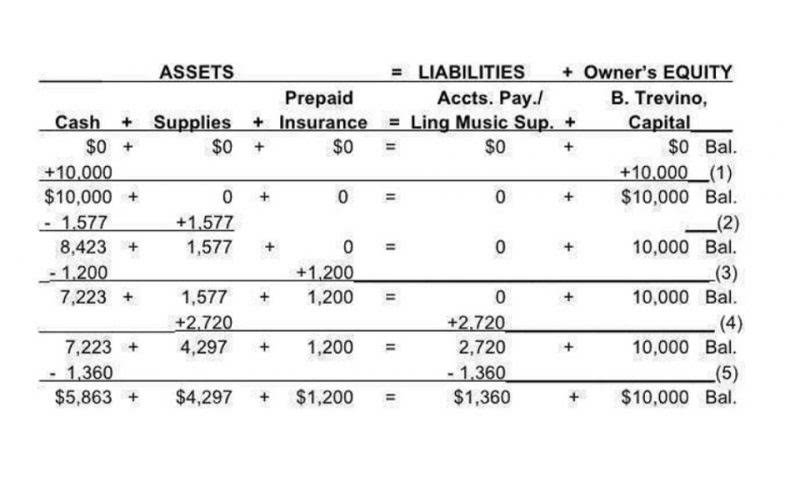
As your certified tax prepare, we are here to ensure that all of your financial decisions are made carefully and with your best interests in mind. We are ready and able to serve as your financial tax planner, bookkeeper, small business start-up guide, and more to help you on a successful financial path. Jon’s Tax Service offers a variety of tax services to both individuals and business, ranging from simple tax return preparation to more complex tax planning strategies.

Many More Reasons to Work With Gift CPAs in Lancaster
As such, hiring a professional accountant to handle your bookkeeping can actually decrease costs and increase productivity. We take care of the boring stuff, giving you more time to focus on more important aspects like expanding your business and securing new clients. At Accurate Bookkeeping & Tax, we’re committed to delivering timely and reliable solutions for your tax and accounting needs. Trust the experienced professionals at Jon’s Tax Service to simplify your accounting and lower your tax liability. Find out how working with an experienced Lancaster County, PA accounting firm can help your business.

- Trust the experienced professionals at Jon’s Tax Service to simplify your accounting and lower your tax liability.
- We specialize in empowering small to mid-sized businesses with expert financial management solutions tailored to your unique needs.
- And if you need to know what your business is worth, ask for our business valuation services.
- Get in touch with us to explore how Bliss Business Services can elevate your business performance and financial health.
- With our powerful financial guidance and support, your business won’t just make it, it will thrive.
- Ensuring your books and records are in order is one of the most important aspects of any business.
With our powerful financial guidance and support, your business won’t just make it, it will thrive. If you want an advisor you can trust when it comes to tax planning, bookkeeping, and accounting services in Lancaster, PA, Gift CPAs is the one to turn to. Since 1984, we’ve been providing the services and expertise of a large firm and the personal service that comes with a small Airbnb Accounting and Bookkeeping accounting operation—all close to you in Lancaster, PA. Jon’s Tax Service is a client-centered accounting firm located in Lancaster County, PA. We take great pride in our tradition of providing high-quality accounting and tax services. When you become our client, we strive to get to know you and become an insightful financial partner who really understands your goals and challenges.
Our monthly virtual bookkeeping services are designed to streamline your financial processes. Through personalized services tailored for not for profit organizations and small Bookkeeping Services in Lancaster businesses, Angela goes the extra mile to ensure clients are satisfied and on a solid financial footing. Our services include performance graphs, accounts payable check writing services, operating statements, general ledgers, balance sheets, and bank reconciliations.

All such information is provided solely for convenience purposes only and all users thereof should be guided accordingly. The following is the format cash flow of the balance sheet under the order of liquidity method. Because they are the most liquid, meaning, you can convert them to cash quickly and easily. The order is important because it reflects which assets you are going to use in order to pay liabilities. For example, a company that relies on inventory would have a different order of liquidity than a company that relies on receivables.
Account
For example, if you hold a money market fund inside your IRA, that is a liquid asset. If you needed cash quickly, you likely would not be able to sell your home overnight to get money. In fact, people often refer to liquid assets as cash or cash equivalents, because they know that the asset can be exchanged for actual cash without losing value. Under the order of liquidity method, an organization’s bookkeeping and payroll services current and fixed assets are entered in the balance sheet in the order of the degree of ease with which they can be converted into cash.
How are the items of assets and liabilities arranged on the balance sheet?
Real-time financial record updates enable seamless reporting and strategic decision-making. Regular audits and reconciliations identify discrepancies early, reducing the risk of financial misstatements and enhancing the reliability of financial reports. Companies that maintain their assets in an order of liquidity can quickly discern which assets can be tapped at short notice to cover immediate financial needs. For instance, within a balance sheet assets are usually organized in order of liquidity. Short-term notes receivable are formal agreements where customers or other parties promise to pay a specific amount within a year, often with interest. These instruments provide predictable cash inflows and are more structured than accounts receivable.
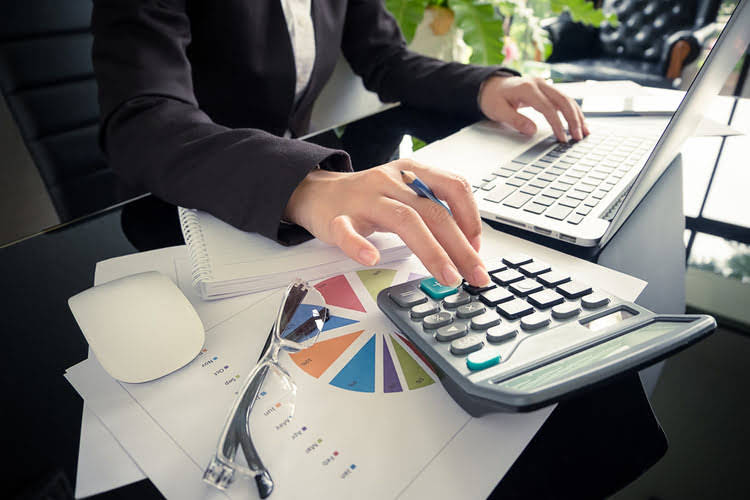
How are assets and liabilities arranged in the balance sheet?
Order of Liquidity is a concept in financial management, which refers to the sequence in which various assets of a company are converted into cash or cash equivalents. The assets that can be easily converted into cash without any significant price fluctuations are considered first in the order of liquidity. Short-term notes can help manage customer relationships by providing structured repayment options, reducing the risk of bad debts. However, businesses must assess borrowers’ creditworthiness and monitor collectability to avoid reclassification as non-current assets or recording bad debt expenses, which can negatively impact financial performance. While the current ratio is also referred to as a liquidity ratio, a company with the majority of its current assets in inventory may or may not have the liquidity needed to pay its liabilities as they come due. Its liquidity depends on the speed in which the inventory can be converted to cash.
- Upon its launch, Berachain mainnet offered multiple native applications including a token bridge, stablecoin minter, a block explorer, and BeraHub, a place for users to make use of Berachain assets.
- In times of financial distress, the company seeks to liquidate its assets to pay off liabilities, making ‘order of liquidity’ a crucial consideration for potential investors, lenders, and creditors.
- You can cash in your chips at any time, making money-market funds a liquid investment.
- Order of liquidity is a financial concept that refers to the sequence in which assets are expected to be converted into cash or how quickly a liability is to be paid off.
- The arrangement of assets and liabilities on the balance sheet in a particular order is called marshalling.
- One day prior, the Foundation will launch an airdrop checker for users to determine whether or not they are eligible for the airdrop, in addition to sharing a full tokenomic breakdown.
- The most liquid assets (cash) are listed first, and the least liquid (intangible assets) are listed last.
- Maintaining an accurate accounts payable ledger is essential for financial reporting and compliance with accounting standards like GAAP or IFRS.
- A full list of protocols, which range from casinos like Pepino Casino, to smart rings like Moon Ring, and all the DeFi protocols like StakeStone and Dolomite is available to users looking to further explore.
- Under the order of liquidity method, an organization’s current and fixed assets are entered in the balance sheet in the order of the degree of ease with which they can be converted into cash.
- Which are liquid assets you can convert into cash immediately at the current assets of the market price, through marketable securities.
- However, an extremely high level of liquidity can also indicate inefficiency, as excess capital might be better used for business growth.
“Contribution” deals with the situation where two or more creditors have competing liens on one piece of property. Specifically, permanent assets are shown first and less permanent assets are shown afterward. At Financopedia, we’re committed to assisting small businesses and individuals with their finances and taxes. The order of liquidity is important for businesses because it provides a framework for making investment decisions.
Is a 401(k) considered a liquid asset?
Proper management of unearned revenues ensures accurate financial reporting and transparency. Businesses must allocate these revenues across periods in which goods or services are delivered. For example, a $12,000 one-year subscription would be recognized as $1,000 in revenue each month, with the remaining balance recorded as a liability. Mismanaging unearned revenues can lead to overstated earnings and regulatory scrutiny.


Having more liquid assets is desirable because it indicates that a company can pay off debt more easily. When businesses need to determine how cash liquid they are, they often look at the amount of their net liquid assets. When all current debts and liabilities are paid off, whatever remains is considered their liquid assets. Investors who don’t have adequate liquid assets run the danger of selling assets quickly and possibly at a loss as they scramble to accumulate the cash for their short-term financial obligations. For stock investors, this scramble may include prematurely selling stocks that they originally intended to use as long-term investments.
In which order assets and liabilities of a company are usually marshalled?

This often involves classifying receivables based on how long they have been outstanding and estimating uncollectible amounts through an allowance for doubtful accounts. This estimation considers historical collection data and current economic conditions. Liquid investments can play a surprisingly important list assets in order of liquidity role in your financial wellbeing.
Advance Your Accounting and Bookkeeping Career

Similarly, the fixed or long-term liabilities are shown first under the order of permanence method, and the current liabilities are listed afterward. The arrangement of assets and liabilities on the balance sheet in a particular order is called marshalling. Creditors are typically more willing to lend money to companies that have more liquid assets because they are less risky. This includes items such as cash, balance sheet, accounts receivable, and inventory. To get assets onto Berachain mainnet, users can use the native token bridge, which is powered by LayerZero and supports any token within Uniswap’s token list.